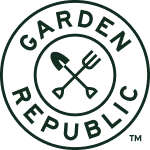If you are ready to try something new in your garden this year, try putting on your creative thinking cap, take gardening one step further, and create a fun theme to build and plant your garden around! You've probably heard of some common ones: pollinator gardens, salsa gardens, 3-sisters gardens, and specific one-type( such as a Tomato garden) vegetable gardens! Our newest favorite is a Pizza and Pasta Sauce garden!
Who doesn't love eating some yummy pizza and or spaghetti for dinner? And it turns out even more delicious if you use fresh ingredients and make them right in your own kitchen, so much yum! This is also a great family project and a sneaky way to get the kids excited about planting veggies and herbs and eat them too!
How much room do I need?
The first thing you want to do is figure how much space you can dedicate to your sauce garden. Do you have ample space outdoors? Will you be growing in containers on your patio? Do you want to grow enough to store the extra sauce later, or do you want to make it fresh each time? Whatever your situation and needs, you can plan around it!
Seeds and Supplies
The next step is deciding what seeds you need! It's good to have a couple Tomato and Pepper varieties, as well as a well-assorted variety of culinary herbs. You will need:
- -2 sauce/paste Tomato plants ( San Marzano is one of the most well-known and tastiest!)
- -1 sweet Pepper plant variety( any Bell Pepper)
- -1 mildly spicy Pepper plant variety ( Anaheim or Poblano work well)
- - at least 2 plants each of the herbs you want to use in your sauce, such as oregano, basil, parsley, thyme, cilantro, chives ( or garlic), dill, arugula, or whatever herbs you want!
- -at least 2 dozen onion sets
- - Sunshine! Most Vegetables and Herbs need 8 hours of sunlight. Some herbs can do a little less. The seed packets will say full or part sun on them.
- - Organic Soil! You will need different types of soil for seeds and sprouts. Seed starting soil for seeds, garden soil for in-ground, and potting soil for pots.
- - Organic Plant food. Once your seeds have sprouted, you will need organic food to feed them. It's best to start with a low-nitrogen food when the sprouts are young, then can switch to an organic all-purpose veggie fertilizer once they've matured more.
You can read more on soil types and plant food here.
Sowing your seeds
It's always best to start your seeds indoors. That way, you can better control their growing environments, such as temperature and light. The soil you use to sow your seeds is very crucial. Only use soil that is meant for planting seeds. The best kind is made of peat or coconut coir, and of course organic!
Makes sure you check the germination days on the back of the seed packets to see which seed types will take longer and need to be sowed first.
Temperature and watering are also very important! Check the back of each seed packet to see what temperature they require. You don't ever want your soil to dry out, but you also don't want your soil to be super soggy either. Use a toothpick to test when you need to water or purchase a moisture meter.
Once your sprouts have developed a couple sets of leaves and are a few inches tall, they will be ready to move to their forever home! You can read all about transplanting here.
For a 4'x4' bed:
If you are growing in your yard, whether it be straight in the ground or a raised bed, a good size to start with is a 4' X 4' bed. You can easily double it up if you want to have extra to save for later or have a large family.
You can put 1 large plant in each square ( tomatoes and peppers) and fill in between the large plants with the herbs. The onions you will want to plant along the outside edge of the garden bed. Space out all plants as much as possible!
Growing in Pots:
If you are doing a patio garden, you will want a separate pot for each Vegetable plant. The tomatoes and peppers will flourish best in at least a 3-gallon pot per plant or larger. You can do slightly smaller, but they won't be as happy and produce as well. You will also want to go with larger pots for the onions, as they grow in the soil and need to be spaced a few inches apart. The herbs can do in slightly smaller 1-2 gallons pots and have a couple of plants in them.Get creative with your pots! You can plant in pretty much anything, as long as there is lots of space for roots and drainage holes to let out excess water.

And that's how you plan and plant up your Pizza/Pasta Sauce garden! Our Tomato Seed Set, Culinary Herbs Seed Set, and Pepper Seed Set are the perfect choices to start your sauce garden.
If you have any questions about the seed varieties and their growing needs, please let us know! You can reach us by email at wecare@shopgardenrepublic.com or message us on our Facebook page.
Happy Sauce Growing!


